Watches, warnings and vanishing advisories

“Simplify, simplify” were the famous words of Henry David Thoreau. The National Weather Service is trying to take him up on that concept concerning terminology. It won’t be easy. This is a list of the most commonly used weather alert terms.
There are regional terms not used across the country, the most obvious of which might be lake-effect snow warning (I doubt the Phoenix NWS has that one in their alert arsenal). In 2015, I was one of about a dozen broadcast meteorologists who participated in a conference call with several NWS headquarters senior supervisors on the topic of terminology simplification and improvement. At the time, I lobbied for the return of the lake-effect snow warning, which had been removed in favor of the more generic and less descriptive winter storm warning. NWS was already a step ahead of me, having received negative feedback from Great Lakes NWS forecast offices, and was already considering reinstituting lake-effect snow warnings. They followed through. Lake-effect snow warnings are back and a long missing term – snow squall warning – has been added for brief duration intense localized snow events.
NWS does a good deal of social research as to how the public perceives its terminology. With about 100 types of weather alerts – NWS doesn’t issue “alerts” – their research indicates the need to simplify and eliminate confusing and/or redundant alert terms. First on the agenda is the category known as advisories. Winter weather, flood, wind and other phenomena all have advisory-level categories, shy of a warning. Up until now, advisories have been issued for disruptive but not severe weather phenomena. For example, this is the NWS definition of a wind advisory: “A Wind Advisory is issued when the following conditions are expected: 1) sustained winds of 31 to 39 mph for an hour or more. AND/OR 2) wind gusts of 46 to 57 mph for any duration.” When more widespread damage is expected, a high wind warning is issued. Here, again, is the NWS definition of what is regarded as a severe weather term: “A High Wind Warning is issued when sustained winds of greater than 40 mph are expected for one hour or more, or gusts greater than 58 mph are expected for any duration.”
During our conference call – NWS revealed in a recent focus group with the public – there was still confusion between watch and warning. In our region, I tried to help with this issue by running crawls when watches were issued. They looked like this: “A High Wind WATCH (not yet a Warning) has been issued for…” That was an unofficial format, but I received some anecdotal emails from the public that it was a helpful way of phrasing what a watch is versus a warning.
The biggest challenge is advisories. Former Western New Yorker Eli Jacks, chief of the forecast services division at NWS headquarters, told the Washington Post regarding those public focus groups: “There was a chorus that the term ‘advisory’ is misunderstood, and watches vs. warnings are misunderstood,” Jacks said. “If a watch and an advisory are conflated with one another, then neither one has much value.”
There also is the decision-making workload on NWS forecasters at the local offices regarding whether to go with an advisory or elevate to a warning. Issuing too many warnings that don’t actually verify can create the “boy who cried wolf” syndrome in some segments of the public. These calls can be quite difficult to make.
Broadcast meteorologists have to relay these advisories, watches and warnings, then explain them during weathercasts (even if they occasionally don’t quite agree with the call).
As for advisories, NWS is giving consideration to eliminating most of the advisory category altogether, which is quite the challenge. For one thing, some members of the public and even private sector meteorologists consider an advisory a “downgrade” from a previously issued watch. Let’s say the NWS Buffalo office has issued a high wind watch one or two days in advance of a wind event, feeling conditions will probably be favorable for widespread damaging winds. Then, as the event draws close, the staff feels the winds won’t actually reach high wind criteria, so they make the call to go for a lesser wind advisory. Such a call can create confusion about the initial, more ominous watch. It’s been my experience that most high wind watches end up being elevated to a high wind warning, because the initial call for the watch was a good one. Winter storm watches, though, are somewhat more frequently changed to an advisory because snow totals are a more difficult call as events draw near.
As of now, NWS aims toward replacing advisories with more flexible special statements and bulletins for lesser but still hazardous events. In such a format, meteorologists won’t have to agonize, say, over forecast wind speed criteria of advisories vs. warnings. Timing of weather events will always be key. A short duration hit of just 1-2 inches of slushy snow during the morning commute has a far greater impact than the same amount at 1 a.m.
“We want the reformatting of the messages into a ‘what, where, when’ impact format,” Jacks said. “It’s really about a person who isn’t a professional, who needs to understand information without going to a dictionary.”
Jacks hope a simple concept “watch means prepare, and warn means ACT” – can offer the public more understandable terminology. They are reaching out to you, the public, for your thoughts on the terminology in this survey, released last Thursday.
NWS and I hope many of you will take a few minutes to participate in the survey, as no irrevocable steps have yet been undertaken in this reformatting. The elimination of advisories would create some new problems in public understanding, according to a number of social scientists assisting NWS. There is even the problem of how cellphone carriers can code statements and bulletins to alert users a nonsevere but still hazardous event is occurring. I’ll come back to this topic when changes are taking place.

